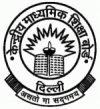(Download) Class XII Supplementary Reading Material: Economics Part A (Introductory Microeconomics) For 2010
Disclaimer: This website is NOT associated with CBSE, for official website of CBSE visit - www.cbse.gov.in

Central Board of Secondary Education
CBSE Class XII Supplementary Reading Material in Economics Part A Introductory Microeconomics
(Effective from March 2010 Examination)
INTRODUCTORY MICROECONOMICS
UNIT-I : PRODUCTION POSSIBILITIES CURVE
The production possibilities (PP) curve is a graphical medium of highlighting the central problem of 'what to produce'. To decide what to produce and in what quantities, it is first necessary to know what is obtainable. The PP curve shows the options that are obtainable, or simply the production possibilities.
What is obtainable is based on the following assumptions:
1. The resources available are fixed.
2. The technology remains unchanged.
3. The resources are fully employed.
4. The resources are efficiently employed.
5. The resources are not equally efficient in production of all products. Thus
if resources are transferred from production of one good to another, the cost
increases. In other words marginal opportunity cost increases.
The last assumption needs explanation because it determines the shape of the PP curve. If this assumption changes, the shape changes. Efficiency in production means productivity i.e. output per unit of an input. Let the input be worker. Suppose an economy produces only two goods X and Y. Suppose a worker is employed in production of X because he is best suited for it. The economy decides to reduce production of X and increase that of Y. The worker is transferred to Y. He is not that efficient in production of Y as he was in X. His productivity in Y will be low, and so cost of production high. The implication is clear. If the resources are transferred from one use to another, the less and less efficient resources will be transferred leading to rise in the marginal opportunity cost which is technically termed as marginal rate of transformation (MRT).
What is MRT?
Marginal Rate of Transformation (MRT)
To simplify, let us assume that only two goods are produced in an economy. Let these two goods be guns and butter, the famous example given by Samuelson. The guns symbolize defense goods and butter, the civilian goods. The example, therefore, symbolizes the problem of choice between civilian goods and war goods. In fact it is a problem of choice before all the countries of the world. Suppose if all the resources are engaged in the production of guns, there will be a maximum amount of guns that can be produced per year. Let it be 15 units (one unit may be taken as equal to 1000, or one lakh and so on). At the other extreme suppose all the resources are employed in production of butter only. Let the maximum amount of butter that can be produced is 5 units. These are the two extreme possibilities. In between there are others if the resources are partly used for the production of guns and partly for production of butter. Given the extremes and the in-between possibilities, a schedule can be prepared. It can be called a production possibilities schedule.
Courtesy: WWW.CBSE.NIC.IN